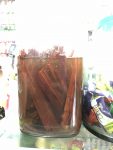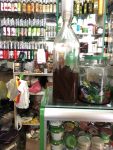Lima is the largest city in Peru. It spreads North and South along the beautiful ocean coastline and far into the suburbs. Each neighborhood of the city has specific characteristics and concerns. We enjoyed a couple of them during our visits to Lima. The first time we arrived in Lima, we were there to pick up our friend who flew in from Arizona.  This time around, we explored the city as tourists often do. We went on a guided tour and explored a museum.
This time around, we explored the city as tourists often do. We went on a guided tour and explored a museum.
The tour was to include food and culture. The food was interesting, we spent a few hours roaming a large mercado (open air marketplace).


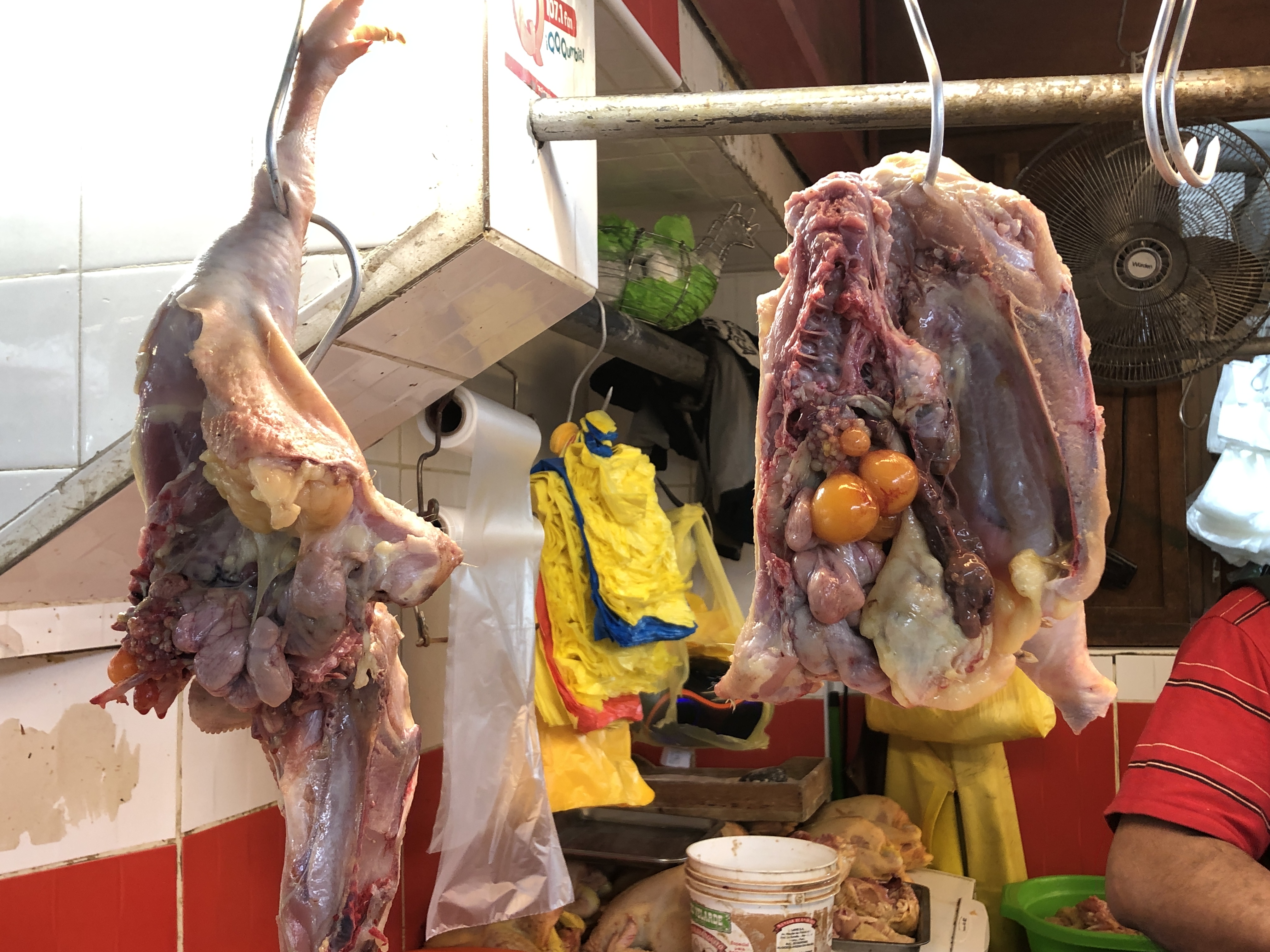

One of the stops on the tour was a cheese counter. This was beneficial to helping us learn what types of cheese we should shop for (Andino). You may notice that the cheese in Peru has no orange dye or food coloring. Did you know that orange is NOT the natural color of any cheese?  We also tasted a shot glass full of a special elixir that is supposed to improve health and cure ills. It is called “chuchuwasi” which means “trembling back” because the bark that soaks in it is reported to cure back pain and arthritis type issues. It tasted more like cheap cough syrup than magic. But the shop sold many special potions, talismans and promises of a better life through magic. The proprietor was a shaman or curandero (native healer).
We also tasted a shot glass full of a special elixir that is supposed to improve health and cure ills. It is called “chuchuwasi” which means “trembling back” because the bark that soaks in it is reported to cure back pain and arthritis type issues. It tasted more like cheap cough syrup than magic. But the shop sold many special potions, talismans and promises of a better life through magic. The proprietor was a shaman or curandero (native healer).
After all the market fun our tour took us to the second largest cemetery in the world. The Virgin de Lourdes is over 60 hectares (over 148 acres) in size and contains more than one million graves. It is the site of daily religious services, funerals and ceremonial services. At any given moment there can be hundreds of people visiting the area. It was developed with people migrated to the Lima area in large numbers. It is now managed by the city, but much of the historical memory is lost.



The next tour stop took us into a home where a women’s cooperative produces handcrafts for sale. Her products have become so popular that they are sold in bulk to American companies such as Speigel and World Market.  After a bumpy van ride into some very poor regions of Lima, we visited a makeshift classroom. This program focuses on empowering and supporting domestic child-workers. This is a space where they can learn to play, cooperate and have fun. Most of these children work as maids, cleaners, car washers, street vendors or beggars when they are not attending this program. Here they receive snacks, play games and get help to stay in school. You can learn more about this group, trying to offer and opportunity for children to be children, at their Facebook page. Click HERE
After a bumpy van ride into some very poor regions of Lima, we visited a makeshift classroom. This program focuses on empowering and supporting domestic child-workers. This is a space where they can learn to play, cooperate and have fun. Most of these children work as maids, cleaners, car washers, street vendors or beggars when they are not attending this program. Here they receive snacks, play games and get help to stay in school. You can learn more about this group, trying to offer and opportunity for children to be children, at their Facebook page. Click HERE


Another tourist day in Lima was spent at the beautiful, but troubling Larco Museum. This is a private collection of amazing artifacts from around Peru. The collection is so extensive, that there are entire rooms dedicated to the thousands of pieces that are NOT able to be displayed. Let’s look at those first….. 


 To help you understand why this collection is troubling, I remind you of a recent post about the effects of looting at a huge pyramid in Peru. (Click HERE to flash back to that blog post) OR just take a look at this photo. This shows a huge chunk of the structure, removed by a looters backhoe.
To help you understand why this collection is troubling, I remind you of a recent post about the effects of looting at a huge pyramid in Peru. (Click HERE to flash back to that blog post) OR just take a look at this photo. This shows a huge chunk of the structure, removed by a looters backhoe.  When those looters and grave-robbers pillage an archeological site, they are doing it to make money off selling the artifacts they steal. With thousands of archeological sites in Peru, there is a lot of money to be made off this trade. Those artifacts are then sold to private collectors around the world. Sometimes an artifact can change hands many times before ending up in a collection such as the Larco Museum. But Larco is a PRIVATE museum. That means that all the treasures there are NOT the property of the country and the people of Peru. These gorgeous pieces of history belong to a private person or a private foundation, who had the money to purchase stolen or looted and trafficked artifacts. This group, and others, supported the pillaging of important archeological sites to develop their collection. Seeing thousands of such artifacts crammed on to shelves, is truly heartbreaking.
When those looters and grave-robbers pillage an archeological site, they are doing it to make money off selling the artifacts they steal. With thousands of archeological sites in Peru, there is a lot of money to be made off this trade. Those artifacts are then sold to private collectors around the world. Sometimes an artifact can change hands many times before ending up in a collection such as the Larco Museum. But Larco is a PRIVATE museum. That means that all the treasures there are NOT the property of the country and the people of Peru. These gorgeous pieces of history belong to a private person or a private foundation, who had the money to purchase stolen or looted and trafficked artifacts. This group, and others, supported the pillaging of important archeological sites to develop their collection. Seeing thousands of such artifacts crammed on to shelves, is truly heartbreaking.  This fantastic jar, representing twins, may never see a proper museum display. And this excellent example of a human that is trapped between two worlds, will remain in a crowded shelf in a dark hallway of archival archeological artifacts. Such a tragedy.
This fantastic jar, representing twins, may never see a proper museum display. And this excellent example of a human that is trapped between two worlds, will remain in a crowded shelf in a dark hallway of archival archeological artifacts. Such a tragedy. 
But the museum itself has done an outstanding job of displaying the wealth of its private collection. Beautiful golds, coppers, silvers and brass are on display behind the glass walls. The wealth and value of the Larco Museum collection is evident in these amazing pieces on display.


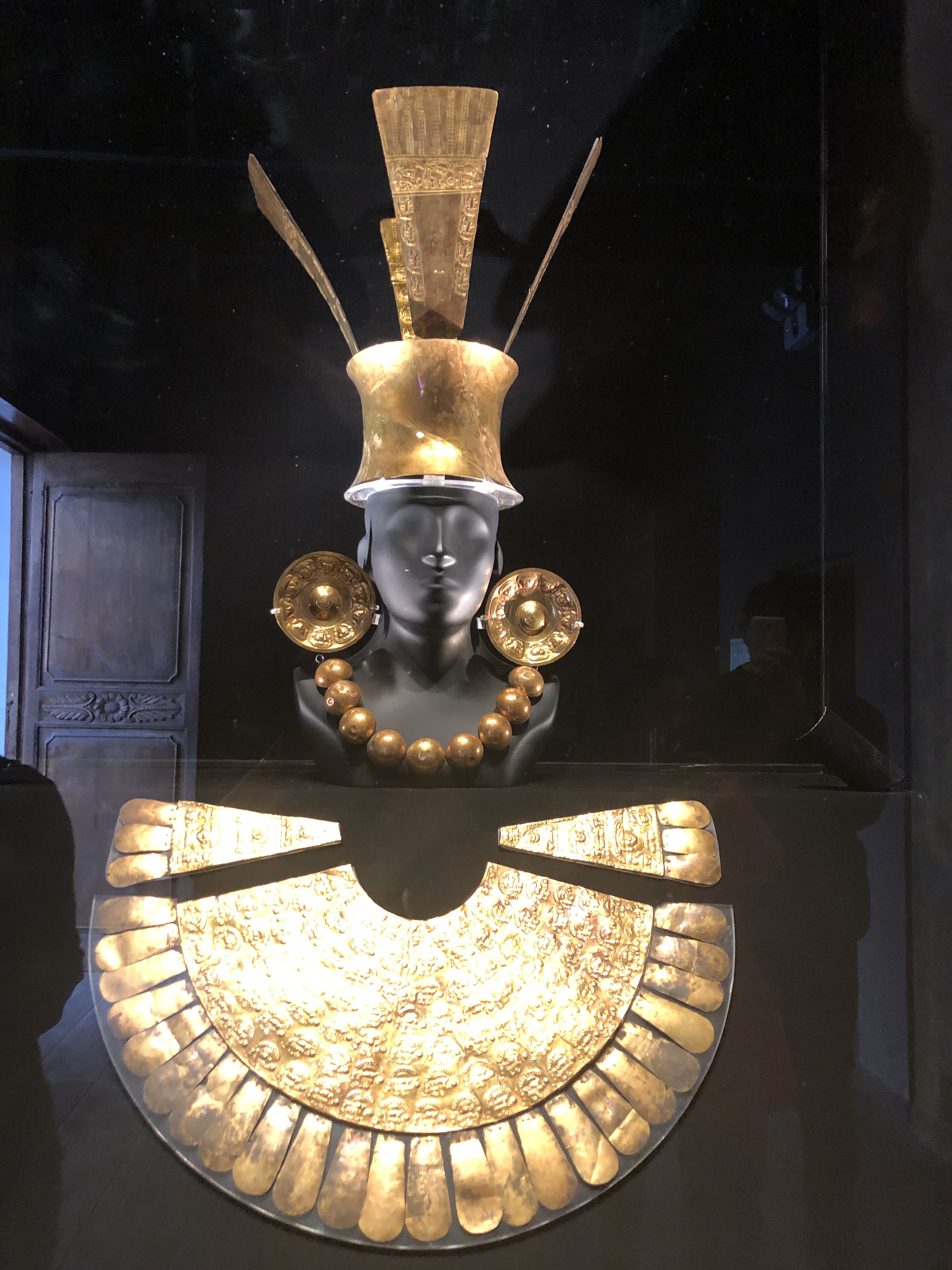
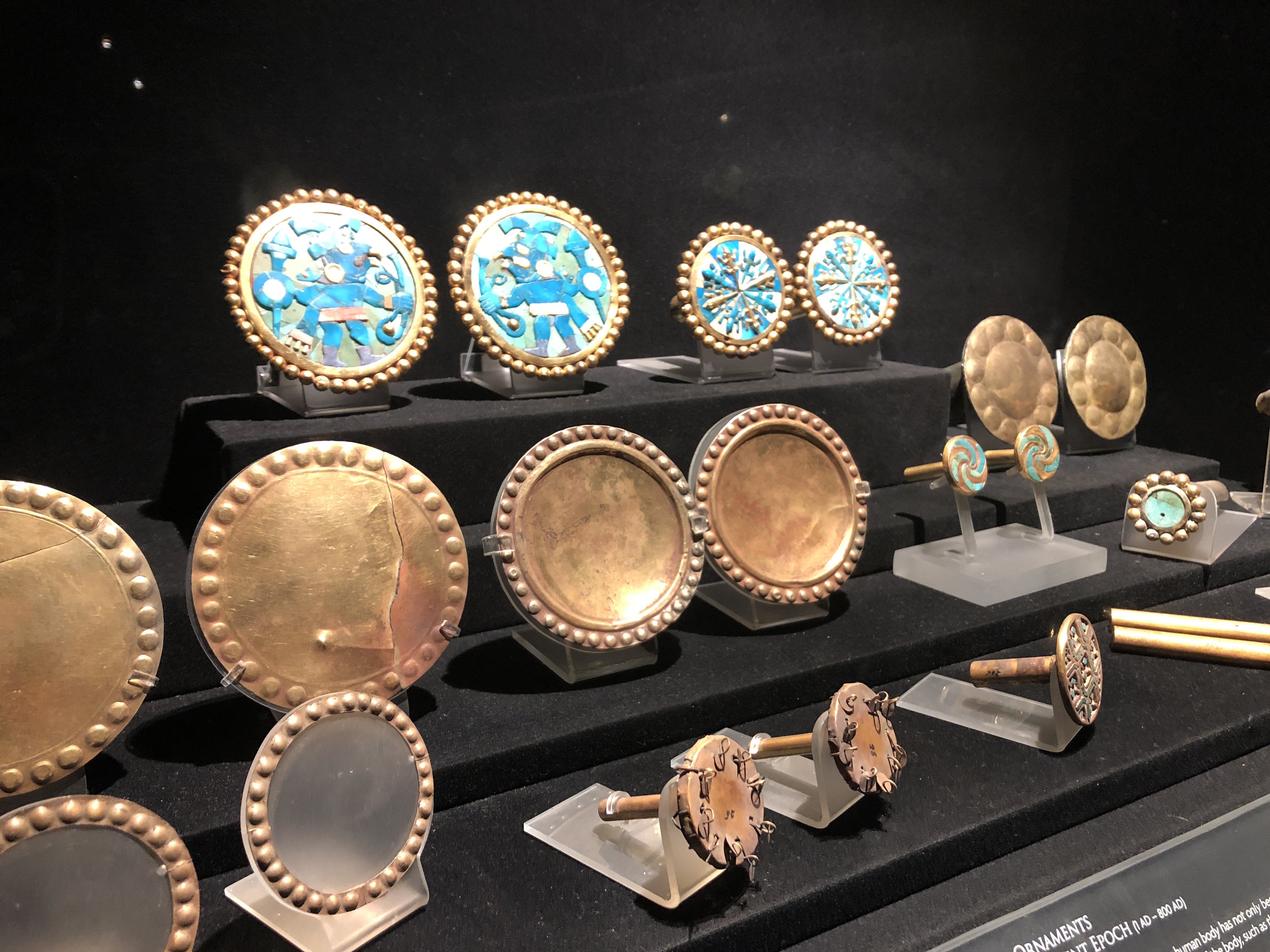
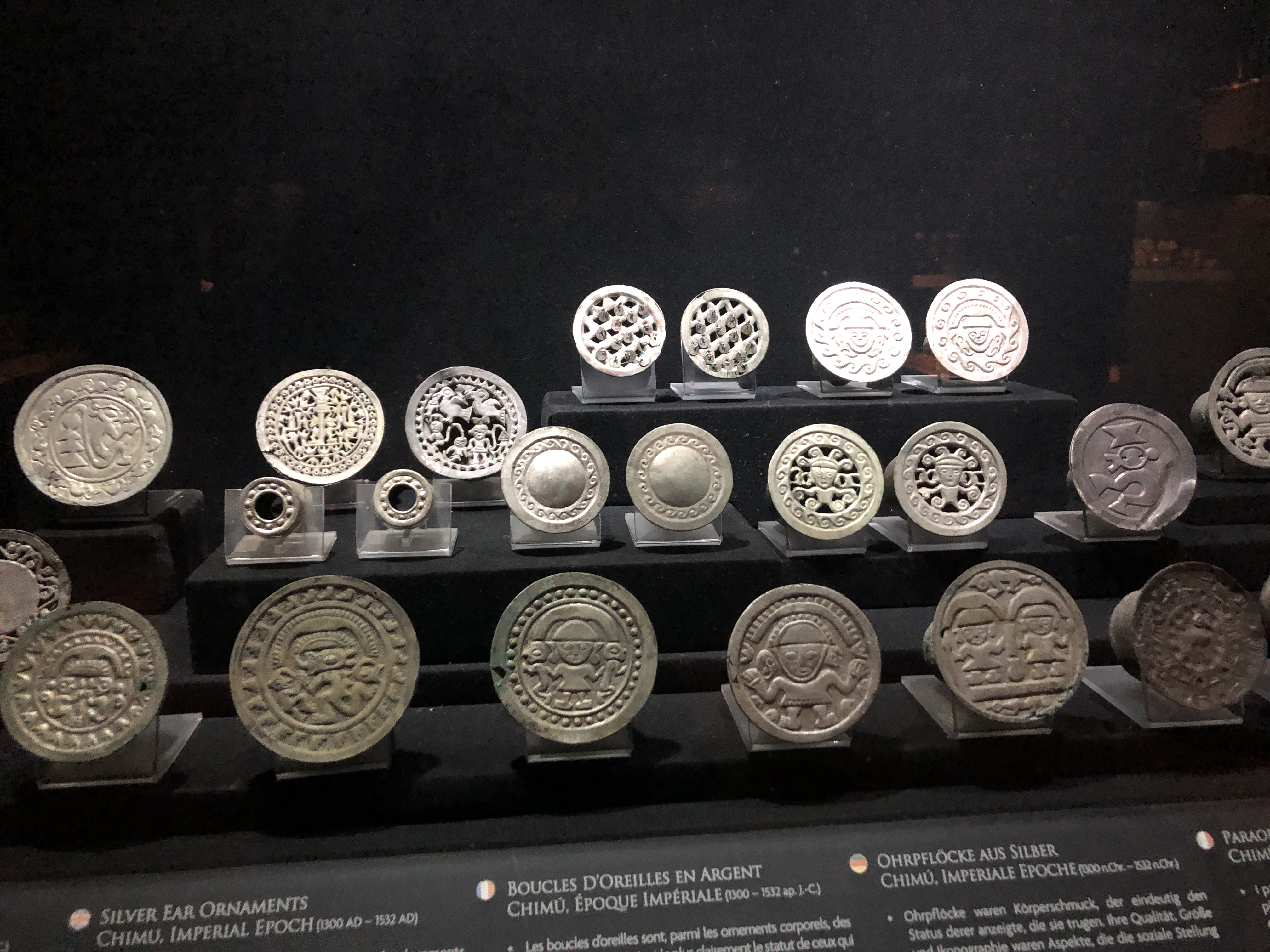
This museum is set in an old family hacienda (large farmhouse) with amazing gardens, trees, a restaurant, gift shop and event space. Here are a few photos of the grounds.


With our friend visiting, we needed to get going and see many more sights of Peru. But before leaving Lima, we introduced her to delicious Venezuelan arepas for dinner. These are made of a large, cornbread pita which is stuffed with meats, beans, cheeses, fried eggs, grilled veggies and more. Then served dripping in rich sauces. Alongside an ice cold lemonade or a spicy cinnamon rice milk, this is a true Venezuelan delight.

MMMmmmm. The food in Lima was good to us during this visit. But we returned to Lima several times. So watch for the next posts, where we will share more of our highlights in the capital of Peru.


